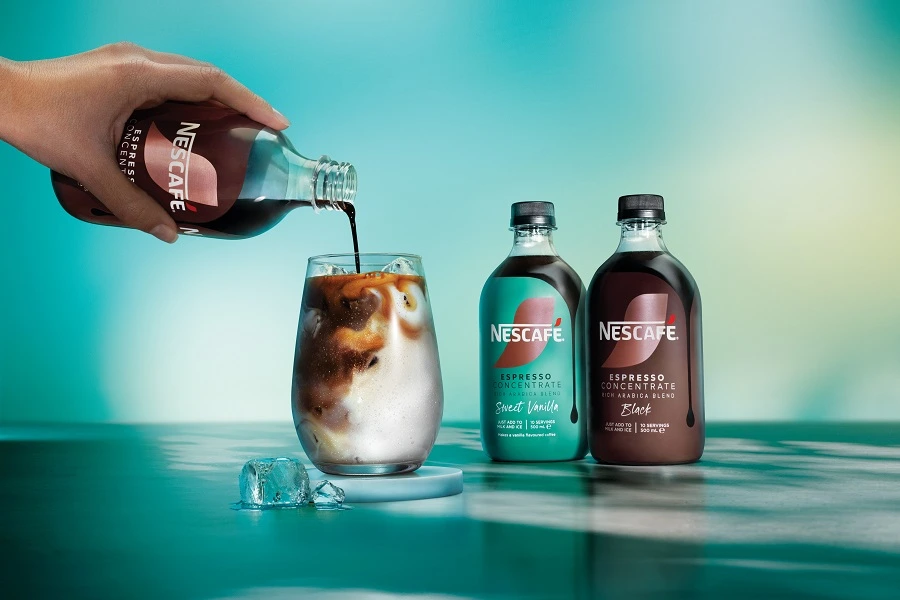Nestlé announces job cuts amid bold restructuring strategy
Key takeaways
- Nestlé plans to cut 16,000 jobs as part of a CHF 3 billion (US$3.76 billion) savings plan by 2027.
- The company reported a 3.3% organic growth, driven by coffee and confectionery, with pricing adjustments to combat inflation.
- It will focus on automation and innovation to drive operational efficiency and growth.
Nestlé will cut 16,000 jobs over the next two years to support its CHF 3 billion (US$3.76 billion) savings target by 2027, CEO Philip Navratil has announced a month after taking office. The move is part of the company’s Fuel for Growth program, which will sharpen its focus on operational efficiency and growth investments.
The layoffs, comprising 12,000 office-based staff and 4,000 manufacturing and supply chain positions, spotlight the company’s shift toward increased automation and technological advancements.
Navratil, who succeeded Laurent Freixe in September, calls the move to cut staff as a “hard but necessary” decision.
“As Nestlé moves forward, we will be rigorous in our approach to resource allocation, prioritizing the opportunities and businesses with the highest potential returns. We will be bolder in investing at scale and driving innovation to deliver accelerated growth and value creation.”

“The actions we are taking will secure Nestlé’s future as a leader in our industry. Collectively, they will enable us to improve our overall performance and deliver shareholder value.”
Coffee and confectionery drive growth
The FMCG giant reported total sales worth CHF 65.9 billion (US$82.76 billion) in the first nine months of 2025, representing a decrease of 1.9%. Organic growth was reported at 3.3%, mainly attributable to the coffee and confectionery categories.
Confectionery’s organic growth of 8.0% was driven by pricing and led by KitKat, with strong double-digit growth in South Asia and Japan.
Coffee grew at mid single-digit, driven by pricing. “The largest growth contributor was Nescafé soluble. Consumer traction was strong in investment areas of Nescafé Espresso Concentrate and ready-to-drink coffee,” reads the 2025 sales report.
Nestlé recently spoke with Food Ingredients First about the rising consumer demand for cold coffee and how its R&D team tackles the clumping challenges in coffee using freeze-drying technology.
According to the National Coffee Association USA, nearly 42% of Americans consumed cold coffee at least once weekly in 2023.
 Consumer traction was strong in investment areas of Nescafé Espresso Concentrate and ready-to-drink coffee, says Nestlé’s 2025 sales report (Image credit: Nestlé).
Consumer traction was strong in investment areas of Nescafé Espresso Concentrate and ready-to-drink coffee, says Nestlé’s 2025 sales report (Image credit: Nestlé).
Offsetting inflation challenges
To combat cost inflation, Nestlé implemented pricing adjustments across various product categories, driven by rising raw material and energy costs due to global inflationary pressures.
However, the company only “passed on a fraction of the price increase to consumers,” a Nestlé spokesperson previously told us.
The report highlights that pricing contributed 2.8% to Nestlé’s organic growth, allowing it to offset some inflationary impacts.
“Powdered and liquid beverages continue to be the largest category growth contributor with 7.5% organic growth, led by pricing as we took actions to address input cost inflation in coffee,” reads the report.
While the F&B giant’s milk products and ice cream experienced organic growth of 1.8%, led by dairy culinary brands Nestlé and La Lechera, the prepared dishes and cooking aids segment reported slightly negative organic growth of 0.4%, driven by “weakness in US Frozen Foods.”
The company notes that strong consumer demand and premium product offerings helped mitigate the risks associated with higher prices.
In other cost-cutting news, beer brewer Heineken has announced a reorganization of its Amsterdam, Netherlands headquarters, which will affect approximately 400 jobs starting in 2026.












